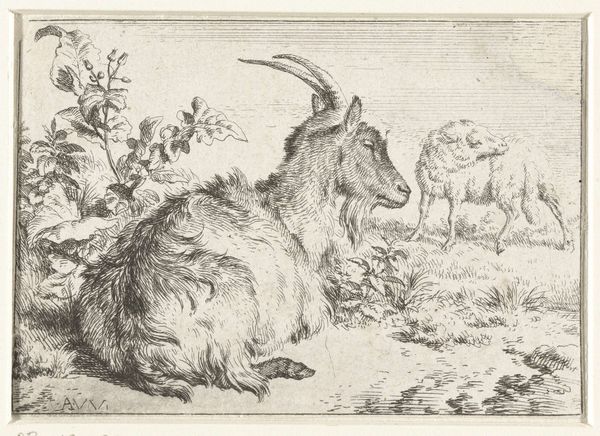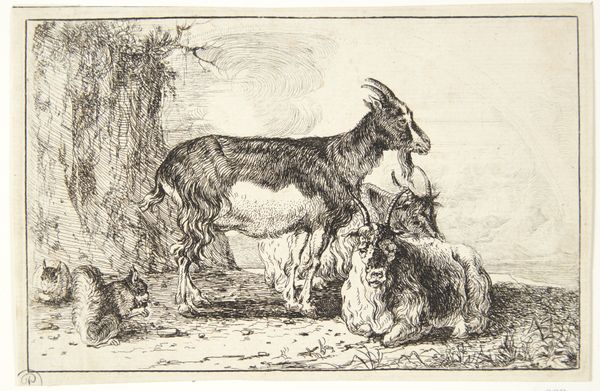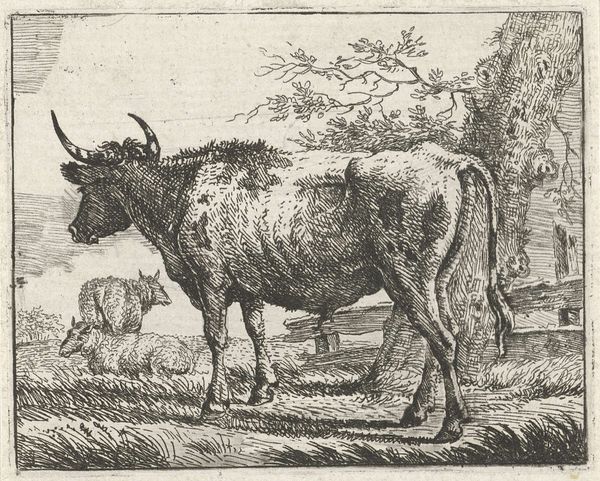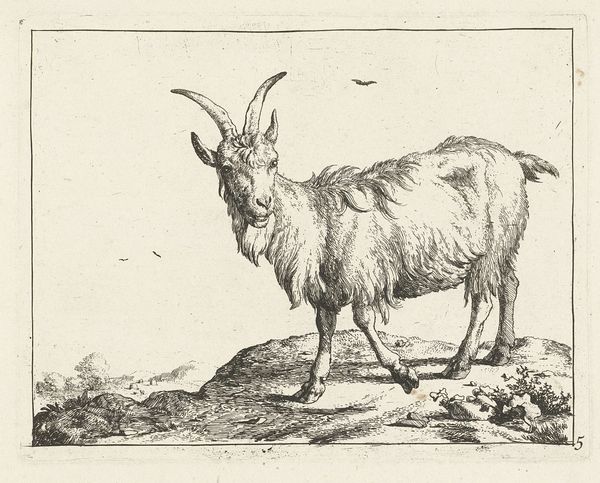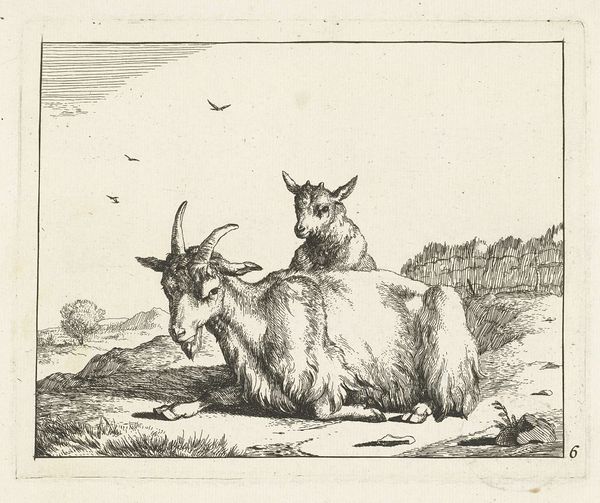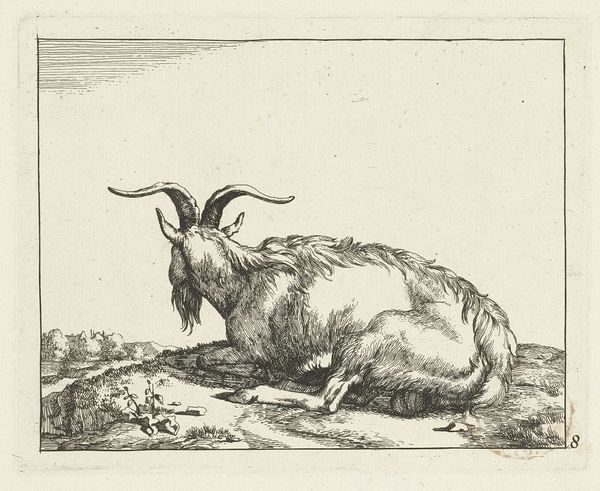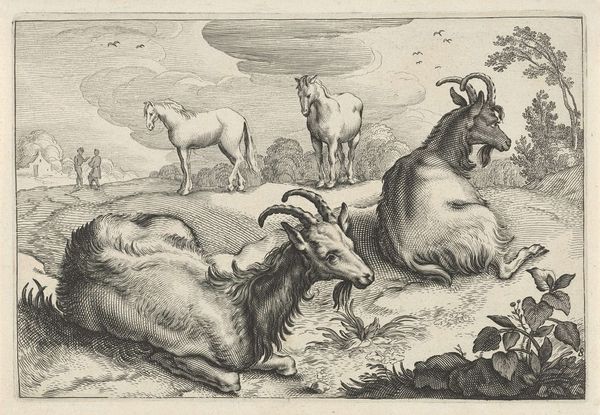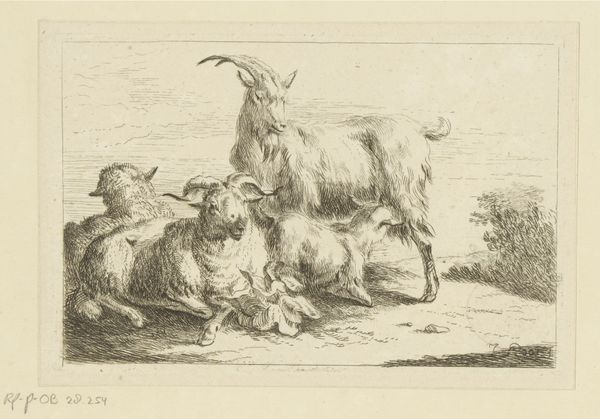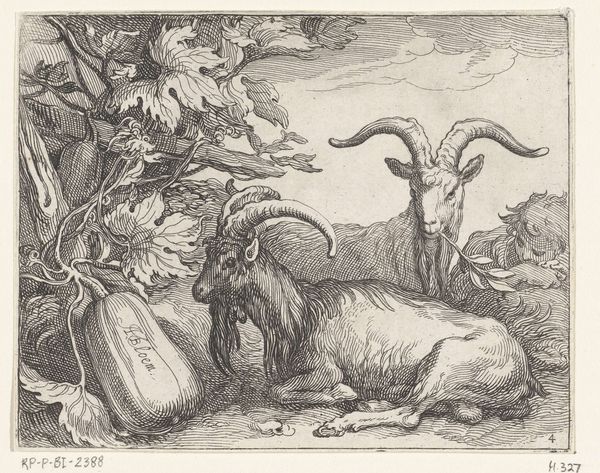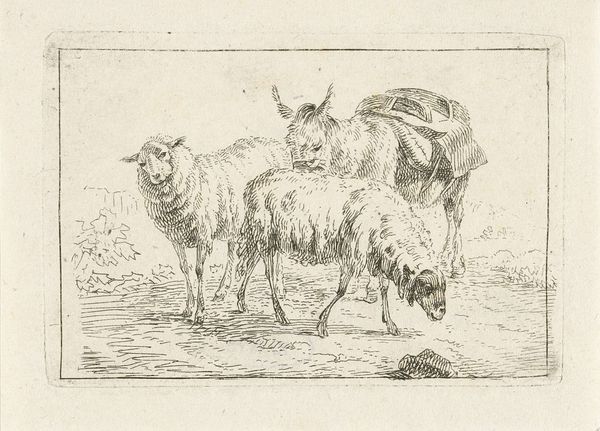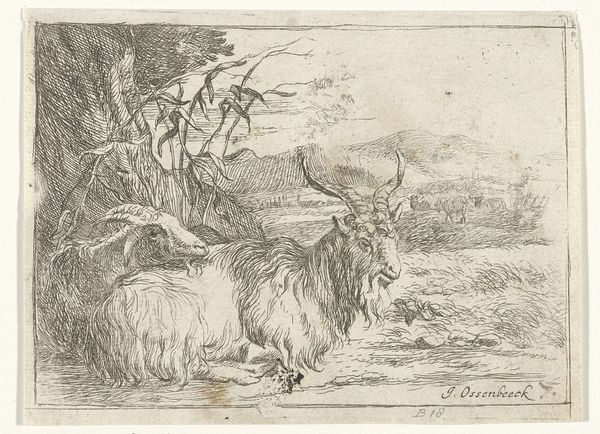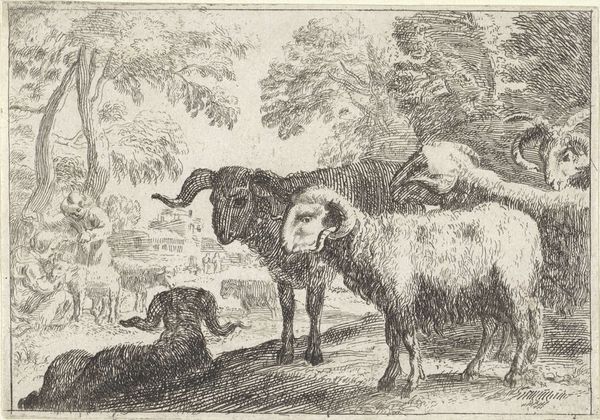
print, etching
#
dutch-golden-age
# print
#
etching
#
landscape
#
figuration
#
realism
Dimensions: height 138 mm, width 158 mm
Copyright: Rijks Museum: Open Domain
This etching, "Vier geiten," or "Four Goats," was created by Simon de Vlieger in the Netherlands sometime before his death in 1653. As a marine painter, de Vlieger was an accomplished master of the graphic arts, as we can see in his skillful rendering of the goats’ varied textures and postures. Prints like this one played an important role in 17th-century Dutch culture. They were relatively inexpensive and easily portable, allowing for the wide circulation of images. In a society with a growing merchant class, prints contributed to a vibrant visual culture beyond the patronage of the church and aristocracy. Given the prominence of animal husbandry in the Dutch Republic, this etching might simply reflect the everyday realities of rural life. But considering the period's complex social dynamics and the rise of market economies, we might also interpret it as commenting on human-animal relationships, property, and the pastoral ideal. To explore this further, one could research the iconography of goats in Dutch art, agricultural practices, and the economic role of livestock. Art history thrives on such interdisciplinary investigation.
Comments
No comments
Be the first to comment and join the conversation on the ultimate creative platform.
